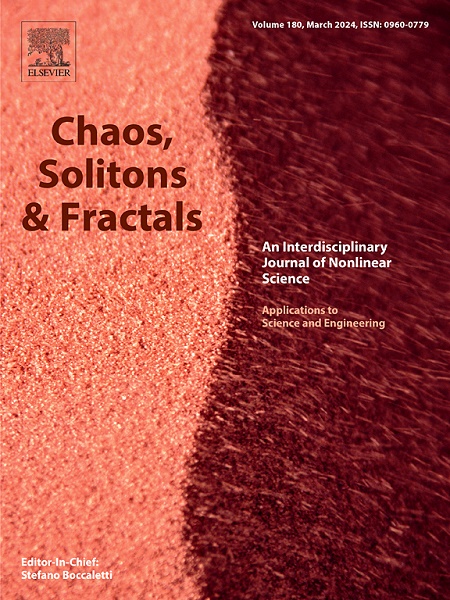记忆记忆Hopfield神经网络中网格多涡吸引子的生成与控制
IF 5.3
1区 数学
Q1 MATHEMATICS, INTERDISCIPLINARY APPLICATIONS
引用次数: 0
摘要
以前生成的网格多涡旋吸引子通常是通过将多分段非线性磁控管忆阻器模型集成到神经网络框架中推导出来的,对替代操作机制的探索有限。为了解决这一问题,本文提出了一种基于记忆电阻的Hopfield神经网络构造网状多涡吸引子的方法。首先,提出了一种基于三神经元的记忆电阻Hopfield神经网络,该网络可以产生和调节多涡旋吸引子。同时,本文重点研究了多层逻辑脉冲对基于忆阻器的Hopfield神经网络动力学特性的影响,讨论了不同脉冲模式如何调节网络的吸引子状态,从而揭示了脉冲调节对网络行为的深刻影响。此外,还从多个维度研究了多涡吸引子和网格多涡吸引子的迁移控制行为。最后,通过设计模拟电路,对具有多级逻辑脉冲的MHNN进行了数值模拟。仿真结果表明了该方法在硬件上实现的可行性。本文章由计算机程序翻译,如有差异,请以英文原文为准。
Generation and control of grid multi-vortex attractors in memristive Hopfield neural network
The grid multi-vortex attractors previously generated have typically been derived by integrating the multi-piecewise nonlinear magnetron memristor model into neural network frameworks, with limited exploration of alternative operational mechanisms. To solve this problem, a method for constructing meshed multi-vortex attractors using a memristor-based Hopfield neural network is introduced by this paper. Firstly, a trineuron-based memristor Hopfield neural network is proposed, which can generate and regulate multi-vortex attractors. At the same time, the influence of multilayer logic pulses on the dynamics of the memristor-based Hopfield neural network is focused on by this paper, and it discusses how different pulse modes regulate the attractor state of the network, thereby revealing the profound influence of pulse regulation on network behavior. In addition, the migration control behavior of the multi-vortex attractor and the grid multi-vortex attractor is studied from multiple dimensions. Ultimately, by developing an analog circuit, the numerical simulation results of the MHNN with multi-level logic pulses were replicated. The simulation results indicate the feasibility of implementing the method based on hardware.
求助全文
通过发布文献求助,成功后即可免费获取论文全文。
去求助
来源期刊

Chaos Solitons & Fractals
物理-数学跨学科应用
CiteScore
13.20
自引率
10.30%
发文量
1087
审稿时长
9 months
期刊介绍:
Chaos, Solitons & Fractals strives to establish itself as a premier journal in the interdisciplinary realm of Nonlinear Science, Non-equilibrium, and Complex Phenomena. It welcomes submissions covering a broad spectrum of topics within this field, including dynamics, non-equilibrium processes in physics, chemistry, and geophysics, complex matter and networks, mathematical models, computational biology, applications to quantum and mesoscopic phenomena, fluctuations and random processes, self-organization, and social phenomena.
 求助内容:
求助内容: 应助结果提醒方式:
应助结果提醒方式:


